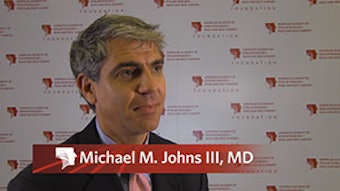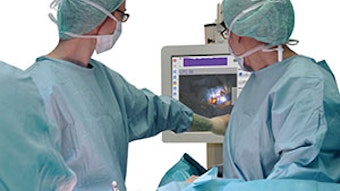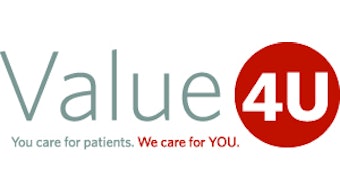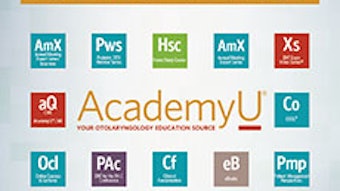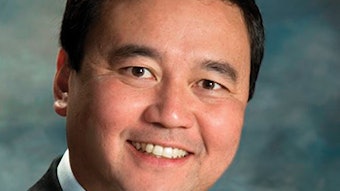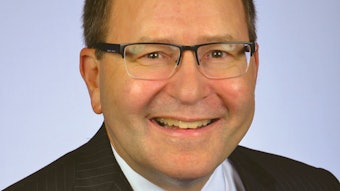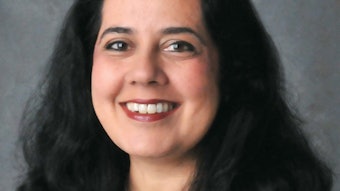Explore the voices of your patients
As physicians, we are called to care for our patients. As otolaryngologists, that care encompasses many complaints: sinus disease, hearing loss, and head and neck cancer, amongst others. On this April 16, World Voice Day, I encourage you to embrace the WVD theme and “explore” the voice of your patients.
Comprehensive otolaryngologic care includes inquiring about the voice and your patient’s daily communication needs
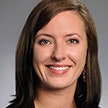
As physicians, we are called to care for our patients. As otolaryngologists, that care encompasses many complaints: sinus disease, hearing loss, and head and neck cancer, amongst others. On this April 16, World Voice Day, I encourage you to embrace the WVD theme and “explore” the voice of your patients.
I have had the good fortune of building a practice treating the full spectrum of laryngological patients: those with voice, airway, and swallowing complaints. Some of my patients—for example, those with chronic cough or paradoxical vocal fold motion disorder—would enter the Voice Center and occasionally wonder if they were in the right place. “My voice is fine,” we would hear. It became clear to us that not everyone understands all that a larynx can do.
Often, a laryngeal disorder does not manifest as a voice problem; on some occasions, voice is a minor piece of the puzzle. Over the course of these visits, through education with our multidisciplinary team, these patients understand that they are in the right place. They have a sort of “aha moment.” These patients emphasize to us that exploring the voice often means exploring other functions of the larynx as well.
In those with isolated dysphonia complaints, I initially had the naiveté to consider those who were professional voice users to consist of singers only and aspiring performing artists. Over time, I began seeing more professional voice users with a different set of problems: teachers with nodules, ministers with vocal fold atrophy, and call center agents with spasmodic dysphonia and severe muscle tension. I realized how many professional voice users are among us, and how few can actually sing. I had an “aha moment” of my own. So, now I realize many of our patients are professional voice users. Despite the glamor of a professional voice user being a well-known performing artist, it is difficult to ignore all the professions requiring daily voice use.
A recent patient of mine was a litigation lawyer; there was no convincing him that he can continue to do what he loves with vocal fold paralysis and significant glottal insufficiency as a result.
Hearing your patient’s complaint and observing your patient’s voice
As a consequence of our training and the need to practice medicine efficiently, we learn to focus our discussions with patients on the chief complaint. Appropriately, we devote time and attention to the main issue that brings a patient to us: sinus disease, cholesteatoma and its infectious complications, or concerns for malignancy.

Many of our professional voice users are plagued by signs of vocal overuse and misuse. Acutely they may suffer from hemorrhage or inflammation; over time though, they can develop vocal fold nodules, polyps, cysts, and sulcus. If we are fortunate enough to identify the dysphonia and follow up by asking how it affects our patients, we may be able to prevent at least some of the consequences of chronic phonotrauma.
In-office laryngoscopy will provide a global picture, with the ability to identify overt pathology. However, when findings on flexible laryngoscopy do not adequately account for vocal quality, stroboscopy is necessary to fully evaluate vocal fold closure and vibratory characteristics. If equipment is unavailable to you, contact the speech-language pathologists with whom you collaborate. Even a short course of voice therapy with a voice-trained speech-language pathologist will help your patients explore their voices immeasurably.
Making use of speech-language pathologists, patient education, and voice therapy
Tips for patient care
ENTs should consider
- What is my patient’s profession?
- Is the patient’s voice integral to his or her performance?
- What are the vocal complaints?
- Is he or she a good candidate for voice therapy?
- Has he or she made progress with voice therapy?
- What are the medical and surgical treatment options?
Primary care providers should consider
- How long has the patient been dysphonic?
- What risk factors for head and neck cancer are there?
- What other symptoms are related? For example pain, dysphagia, dyspnea, otalgia, neck mass, etc.
- Is the patient’s dysphonia affecting daily communication?
The speech-language pathologist’s role in care of patients with voice issues is crucial. A voice evaluation with acoustic and aerodynamic analysis helps to uncover underlying tremor or spasm, glottal insufficiency, and muscle tension among other issues.
That done, and arguably more important, is the time spent with our patients to determine their own vocal awareness. Helping our patients to understand just how much they use their voices—speaking, teaching, preaching, or singing—is the professional voice user’s “aha moment.”
Many of us take for granted the sometimes constant demands we place on our voice and then stress it further by using hands-free devices for phone conversations in the car, speaking louder when in a noisy restaurant, and cheering enthusiastically at our favorite sporting events. For those whose lives and livelihood depend on reliable vocal quality, it is our responsibility to help them understand and care for their voice.
Once we have explored the amount of voice use our patient’s profession requires, we can then focus on how to use the voice safely and efficiently. Voice therapy helps our patients develop awareness of the force and tension inherent in chronic phonotrauma. When properly applied, therapy can reverse some of the traumatic changes inflicted upon the vocal folds. It helps our patients prepare for surgical intervention when indicated. And then, therapy helps our patients recover from surgical intervention by making them more aware of breath support, resonance, volume, force, and the specific vocal needs for their profession. Finally, voice therapy enables some patients to use their voice confidently and efficiently despite persistent pathology.
Promoting voice health and knowledge in the community
We also have an opportunity to explore the voice of our patients on the level of our local communities. Our colleagues providing primary care often hear our patients’ voices before we do. And family members hear our patients’ voices on a daily basis. With so many professions relying on the voice, it is an interest of community public health to promote vocal wellness. At your next local medical society meeting, discuss this importance and remind physicians to listen not just what their patients are saying, but how it sounds. Encourage them to reach out to you for further evaluation and care of dysphonia. Remind them of the importance of identifying not only malignancy and precancerous lesions but also benign pathology that still interferes with daily communication needs, quality of life, and in some instances professional livelihood.
As we all strive to provide comprehensive and quality otolaryngologic care, remember to explore the voice of your patients.
